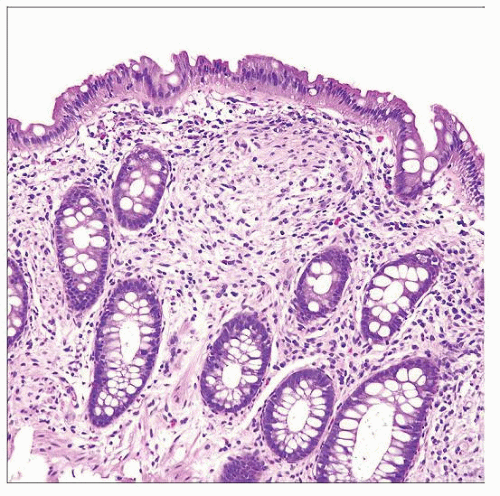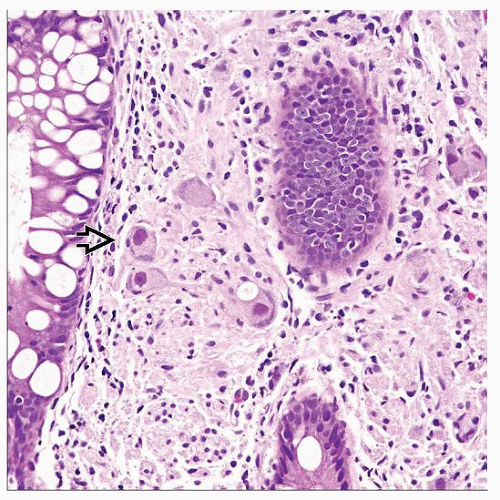Ganglioneuroma
Elizabeth A. Montgomery, MD
Key Facts
Terminology
Neoplasm composed of mixture in variable proportions of spindled schwannian cells and ganglion cells
Syndromic lesions associated with MEN2b, NF1, and FAP
Clinical Issues
Syndromic lesions present at earlier age (mean 35 years) than sporadic examples (mean 48 years)
Most sporadic lesions involve distal colon
All forms of ganglioneuromas/ganglioneuromatosis in GI tract are benign, but large syndromic lesions result in morbidity (obstruction)
Microscopic Pathology
All types show spindle cell population with interspersed ganglion cells
 Hematoxylin & eosin shows a sporadic ganglioneuroma. The process proliferates between glands, replacing the lamina propria. At this magnification, it is recognizable only as a spindle cell lesion. |
TERMINOLOGY
Definitions
Neoplasm composed of mixture in variable proportions of spindled schwannian cells and ganglion cells
Syndromic lesions are associated with
Multiple endocrine neoplasia type 2b (MEN2b)
Neurofibromatosis type 1 (NF1)
Familial adenomatous polyposis (FAP)
Ganglioneuromas of GI tract are similar to soft tissue counterparts
When presenting clinically as ganglioneuromatosis, may herald syndromic condition (MEN2b)
CLINICAL ISSUES
Epidemiology
Incidence
Sporadic examples rare and syndromic ones rarer
Age
Syndromic lesions: Mean age 35 years
Sporadic lesions: Mean age 48 years





